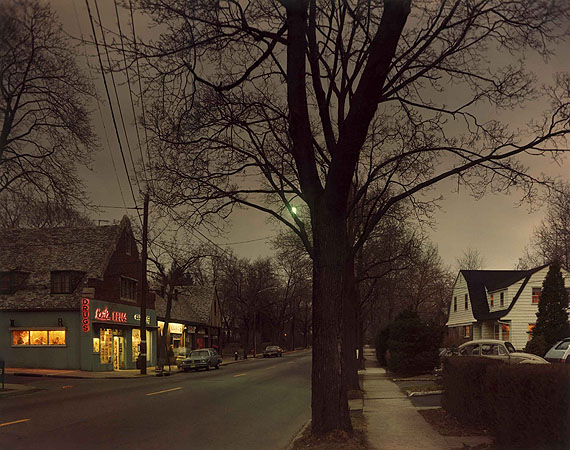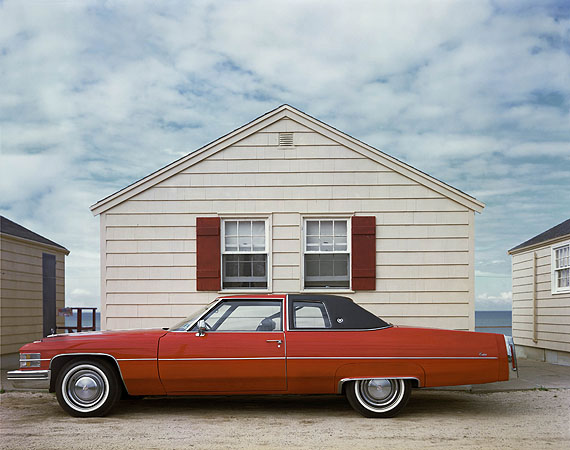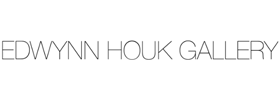
La Brea Avenue and Beverly Boulevard, Los Angeles, California, June 21, 1975
© Stephen Shore, courtesy the artist and Edwynn Houk Gallery
American Pioneers of Color
William Eggleston » Joel Meyerowitz » Stephen Shore »
Exhibition: 23 Sep – 18 Dec 2010
Galerie Zur Stockeregg
Stockerstr. 33
8022 Zürich

Ginger Shore, Miami, Florida, November 12, 1977
© Stephen Shore, courtesy the artist and Edwynn Houk Gallery
AMERICAN PIONEERS OF COLOR: STEPHEN SHORE JOEL MEYEROWITZ WILLIAM EGGLESTON 23 September – 18 December 2010 Opening: September September, 6 – 8 pm For its inaugural exhibition, Galerie Edwynn Houk Zur Stockeregg is pleased to present AMERICAN PIONEERS OF COLOR, a collection of modern and vintage prints by Stephen Shore, Joel Meyerowitz, and William Eggleston, widely acknowledged as the early masters of color photography in the United States. Their pioneering use of color in the 1970s was a bold departure from the long established tradition of black and white photography, which had dominated the medium from its inception, and laid the foundations for contemporary photography today. Although the technology to produce color prints was widely available as early as the 1940s, for many years black and white remained the only accepted medium for fine art photography. Serious photographers held color in low esteem, seeing it as the language of the family snapshot, the tourist postcard or the consumer advertisement. Intrigued and inspired to develop a new vocabulary, Shore, Meyerowitz, and Eggleston began to actively explore the medium of color photography in the late 1960s and early 1970s. Their approach to subject matter was shaped in part by their love of Robert Frank, Walker Evans, and Henri Cartier‐Bresson – artists who wanted to capture the ordinary life of their immediate surroundings. But their sensitivity to color, and desire to shake free from the strong hold of nostalgia that working in black and white entailed, pointed them in new directions, and each photographer used color to explore not the exotic, but the familiar and record its presence in prosaic situations ‐ the American vernacular of gas stations, motels, suburban backyards, diners and small towns. Through their eyes, and the use of color, the banality of the subjects is transcended into compositions of stature and significance. Meyerowitz and Eggleston experimented with the archivally sound yet more labor intensive of printing processes, the now extinct dye transfer print method. This process lends colors a rich, saturated quality. Both Shore and Meyerowitz adopted the use of the cumbersome 8x10 view camera, whose resultant prints revealed all the details and gradations to an astonishingly acute degree. Yet within these prints, there is an intriguing contradiction: whilst being modern in composition and subject matter, the prints are also lush and beautiful because of the photographers’ use of the antiquated 8x10 process. The debate of the merits of color photography reached an apex with Eggleston’s controversial 1976 exhibition at the Museum of Modern Art, New York, their first in color. The show was initially panned by the critics and rejected by audiences, but ultimately color photography and Eggleston’s efforts were appreciated. AMERICAN PIONEERS OF COLOR explores the most important and now iconic works that Shore, Meyerowitz and Eggleston created during the 1970s. Works in the show include many original exhibition prints made at the time. By examining these artists, one can discern how color photography went from being dismissed as unimportant and garish, to becoming the driving force of the medium, accepted and embraced by the most talented and innovative photographers working today. Stephen Shore (b. 1947, New York City) had his first museum exhibition at the Metropolitan Museum of Art in 1971, and his book Uncommon Places was first printed in 1982. Since 1982, Shore has been the director of the photography department at Bard College, New York. Joel Meyerowitz (b. 1938, New York City) was included in The Photographer’s Eye at MoMA in 1963, and began teaching photography at Cooper Union in 1971. In 1978 he received a fellowship from the National Endowment for the Arts and published Cape Light. In 2001, following the attacks on the World Trade Center, he had full access to photograph the site. The archive of these images was published by Phaidon, entitled Aftermath. William Eggleston (b.1939, Memphis) had recently an extensive survey of his work at the Whitney Museum, Democratic Camera: Photographs and Video, 1961‐2008; the exhibition will be touring to Art Institute of Chicago this spring. AMERICAN PIONEERS OF COLOR: STEPHEN SHORE JOEL MEYEROWITZ WILLIAM EGGLESTON 23. September – 18. Dezember 2010 Vernissage: 23. September 2010, 18 – 20 Uhr Die Galerie Edwynn Houk Zur Stockeregg freut sich mit ihrer Eröffnungsausstellung AMERICAN PIONEERS OF COLOR eine Auswahl von vintage und neueren Abzügen der in den Vereinigten Staaten weit herum anerkannten, frühen Meister der Farbfotografie Stephen Shore, Joel Meyerowitz und William Eggleston zu präsentieren. Deren wegweisende Anwendung von Farbe in den 70er Jahren bedeutete eine abrupte Abkehr von der etablierten Tradition der schwarz‐weiss Fotografie, welche das Medium seit Anfang dominierte und das Fundament für die heutige kontemporäre Fotografie legte. Obwohl schon in den 40er Jahren die Technologie für die Herstellung farbiger Prints vorhanden war, blieb die schwarz‐weiss Fotografie während Jahren das einzig akzeptierte Medium für künstlerische Fotografie. Seriöse Fotografen schätzten die Farbfotografie als gering ein und sahen diese lediglich geeignet als Ausdruck für Familienschnappschüsse, Postkarten und Werbebotschaften. Fasziniert und inspiriert ein neues Vokabular zu entwickeln, begannen Shore, Meyerowitz und Eggleston in den späten 60er und frühen 70er Jahren das Medium der Farbfotografie aktiv zu erforschen. Ihr thematischer Zugang wurde beeinflusst durch ihre Vorbilder Robert Frank, Walker Evans und Henri Cartier‐Bresson, Künstler, welche das Alltagsleben in ihrer unmittelbaren Umgebung einfangen wollten. Ihre Feinfühligkeit für Farbe und ihr Wunsch sich aus dem festen Griff der beinahe nostalgischen Arbeit in der schwarz‐weiss Fotografie zu befreien, lenkte sie in neue Richtungen. Jeder dieser Fotografen verwendete Farbe, nicht um das Exotische, sondern das Bekannte in nüchterner Art und Weise festzuhalten – urtypische Tankstellen, Motels, vorstädtische Hinterhöfe, ‚Diners’ und kleine Städte. Mit ihrer Sichtweise und Einsatz von Farbe transferierte sich die Banalität der Subjekte in Kompositionen von Gehalt und Bedeutung. Joel Meyerowitz und William Eggleston experimentierten mit dem aus archivischer Sicht einwandfreien, jedoch arbeitsintensiven Druckverfahren, dem jetzt überholten ‚Dye Transfer Print’‐ Verfahren. Dieser Prozess verleiht den Farben eine reiche und gesättigte Qualität. Sowohl Shore als auch Meyerowitz arbeiten mit der sperrigen „8 x 10 inch ‐ View Camera“ (Grossformatkamera auf Stativ), welche sämtliche Details sowie Tonwertabstufungen in einem erstaunlich hohen Grad von Präzision wiedergibt. Allerdings existiert in diesen Fotografien ein verblüffender Gegensatz: während in Komposition und Thematik modern, sind die Prints durch den antiquierten 8 x 10 inch ‐ Prozess gleichzeitig üppig und schön. Mit Egglestons’ umstrittener ersten Farbfotografie–Ausstellung im Museum of Modern Art (MoMA) in New York City erreichte die Debatte über den künstlerischen Wert der Farbfotografie 1976 ihren Höhepunkt. Die Ausstellung wurde anfänglich in den Fachkreisen kritisiert und vom Publikum abgelehnt, letztendlich jedoch wurden die Farbfotografie sowie Egglestons’ Bemühungen anerkannt. Die Ausstellung AMERICAN PIONEERS OF COLOR erkundet die wichtigsten und heute schon ikonischen Werke, welche Shore, Meyerowitz und Eggleston in den 70er Jahren hervorbrachten. Die Arbeiten in dieser Ausstellung beinhalten zahlreiche vintage Abzüge aus dieser Zeit. Bei der Auseinandersetzung mit diesen Künstlern wird sichtbar, wie die Farbfotografie aus der totalen Ablehnung und Bedeutungslosigkeit zur treibenden Kraft dieses Mediums mutierte, und von den begnadetsten und innovativsten heute schaffenden Fotografen akzeptiert und begeistert angenommen wird. Stephen Shore (*1947, New York City) hatte 1971 seine erste Museumsausstellung im Metropolitan Museum of Art. Seit 1982 ist Shore der Leiter des Fachbereichs Fotographie am Bard College in New York. Im gleichen Jahr ging auch sein Buch Uncommon Places zum ersten Mal in Druck. Joel Meyerowitz (* 1938, New York City) zeigte seine Werke 1963 in der Ausstellung The Photographer’s Eye im MoMA (New York City) und begann ab 1971 Fotografie am Cooper Union in New York City zu unterrichten. 1978 erhielt er ein Stipendium vom Nation Endowment for the Arts und veröffentlichte Cape Light. Nach den Anschlägen auf das World Trade Center 2001 bekam er vollständigen Zugang um die Stätte zu fotografieren. Die Sammlung dieser Bilder wurde von Phaidon unter dem Namen Aftermath publiziert. William Eggleston (*1939, Memphis) hatte 2008 im Whitney Museum in New York eine Retrospektive seines Werkes unter dem Titel Democractic Camera: Photographs and Video, 1961‐ 2008.

Dusk, New Jersey, 1978
©Joel Meyerowitz, courtesy the artist and Edwynn Houk Gallery

New York City, 1974
©Joel Meyerowitz, courtesy the artist and Edwynn Houk Gallery

Truro, 1976
©Joel Meyerowitz, courtesy the artist and Edwynn Houk Gallery
